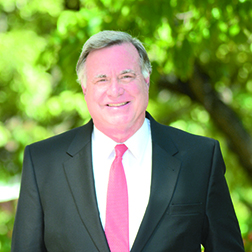Presidential election is Nov. 5
OPINION —
America will elect its 47th president next week. As you know, we do not elect our president by popular vote but by an electoral college system, whereby each state casts the same number of electoral votes as they have members of congress. The magic number of electoral votes is 270. That’s the magic number you should be watching for as you surmise the election results next Tuesday night.
As late as six decades ago in the 1960 Presidential Election between Republican Richard Nixon and Democrat John Kennedy, there were 40 states in play that were not predetermined by party preference. People voted for the person and not the party. Therefore, Nixon and Kennedy had to campaign in all 40 states and their appearance and campaigning made a difference. That is why Kennedy selected his enemy, Lyndon Johnson, to be his vice-presidential running mate in order to carry the state of Texas.
Today, the election is exactly diametrically the opposite as 1960. In next Tuesday’s Presidential Election, there are only seven states in play that really matter. The country is divided along party lines like never before in history. That’s why the polling reveals a 48/48 split. If Mickey Mouse were the Republican nominee, he would carry Alabama and Kansas. By the same token, if Donald Duck were the Democratic nominee, he would carry California and New York.
Again, as you are watching Tuesday night, ignore the national horse race numbers. A Democrat will get the most votes because there are more voters in California and New York than there are in Alabama and Kansas. As soon as the polls close the news channels will color 43 states either red or blue, because the exit polls will tell them what everyone knows and that is that these states are in the bank, or as we would say in red states, “The hay is in the barn.” Most of the country, geographically, including most of the less-populous states, will be covered in red. The blue will stick out on the left coast of California, Washington and Oregon. One blue state in the middle of the country, Illinois, and the other end of the country New York and New Jersey.
The battle for the White House will be waged in the seven pivotal, swing battleground states where the partisan divide is especially marked. Those states — which will decide the election — are Georgia and North Carolina in the south, Arizona and Nevada in the west and the three rust belt midwestern states of Pennsylvania, Michigan and Wisconsin.
The Democrats’ orchestrated maneuver to replace Biden with Kamala Harris was a brilliant ploy. She, being a liberal Democrat of mixed origin and of color, has brought the younger Democratic base Black voter into the fold and they will turn out to vote for Harris. That is what has made this a 48/48 percent horse race, which leaves the 4% undecided vote in these seven states the golden circle of voters. Although Harris brings home the young, Black Democratic voter, polling shows that this golden circle of undecided voters made up of white, middle-class suburban women may not be solidly in her corner. These women — probably in Michigan and Wisconsin — will more than likely decide who is the 47th president. However, turnout is the ultimate key to this race and in any close election.
Is Trump’s older, conservative Republican base more enthused and motivated, or does the liberal Democratic base get their voters to the polls for Harris?
We will see next week.
Steve Flowers served 16 years in the state legislature. steve@steveflowers.us.


